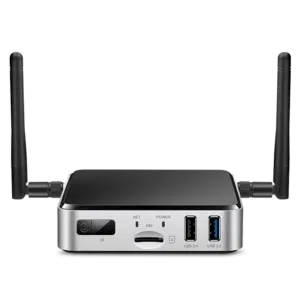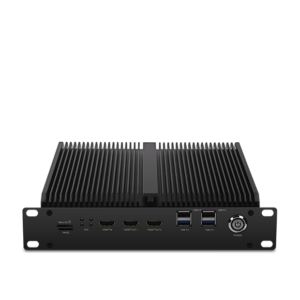AI on Side Units vs. Cloud AI: Advantages and Cons
AI on Side Units vs. Cloud AI: Advantages and Cons
Blog Article
A Extensive Manual to Deploying AI on Edge Devices
Real-World Applications of AI on Edge Devices
Synthetic intelligence (AI) is no further confined to the world of big, centralized information centers. Thanks to developments in engineering, edge units today play a vital position in deploying AI straight where data is generated. But what does AI on side units suggest, and why is it producing this kind of excitement? Here, we'll investigate how embedded edge ai runs in the real world through side units and reveal its wide variety of useful applications.

What is AI on Edge Products?
AI on edge units identifies deploying artificial intelligence formulas entirely on units like smartphones, cameras, drones, or IoT sensors. They do not want use of centralized hosts for processing data; instead, they accomplish analysis and conclusions locally, making the process faster, more efficient, and usually more secure.
The "edge" here simply identifies processing performed close to or at the source of knowledge technology, rather than depending on the cloud. This shift is pushed by the needs for real-time information running and the requirement to decrease latency, improve privacy, and minimize bandwidth usage.
Essential Real-World Purposes of Side AI
1. Smart Monitoring
AI-powered cameras equipped with facial recognition, action recognition, and anomaly detection are transforming detective systems. Side products in that domain may analyze movie streams in real-time to spot suspicious actions, eliminate fake sensors, and improve community safety. Like, AI methods can detect unusual actions and attentive authorities straight away without the need to deliver movie knowledge to a main machine for analysis.
2. Healthcare Monitoring
Wearable products and lightweight medical gear are leveraging m.2 ai accelerator for handling wellness data more efficiently. Edge-based AI in products like health trackers and smartwatches screens users' vitals, such as heartbeat, oxygen levels, or blood force, in real-time. These systems analyze knowledge locally and provide quick feedback, paving the way in which for faster intervention all through emergencies.
Beyond wearables, advanced medical imaging products designed with on-device AI may identify signs of disorders like cancer, allowing earlier in the day diagnoses even in remote parts without internet connectivity.
3. Autonomous Cars
Self-driving cars are among the most well-known examples of edge AI in action. With sensors, cameras, and LiDAR methods providing as information resources, AI computations get position onboard these cars to create split-second decisions. From finding pedestrians and obstacles to moving town streets, side AI ensures that the car works reliably and efficiently. The real-time running convenience of side units reduces the dependence on high-latency cloud programs, ensuring security in life-critical scenarios.
4. Retail Analytics
Side products in retail surroundings are helping corporations analyze consumer behavior. Wise shelves and AI-equipped cameras may identify customer choices, check stock, and actually modify in-store experiences in real time. The info created from these devices assists suppliers produce educated choices, increase customer satisfaction, and enhance catalog management.

5. Commercial IoT
Factories and industrial crops are adopting side AI to revolutionize their monitoring and automation processes. AI-powered devices on equipment find potential faults a long time before they lead to costly failures. Predictive maintenance pushed by side AI reduces downtime, enhances output, and guarantees protection on the production floor.
6. Individualized Activities in Customer Products
Your smartphone is an excellent exemplory instance of how side AI personalizes person experiences. Features such as for example style assistants, versatile camera settings, and on-device language interpretation use real-time AI to respond to person wants without giving sensitive knowledge to additional servers. That fosters equally ease and privacy for the finish user.
The Rising Influence of Side AI
The adoption of AI on side units continues to rise, pushed by industries' increasing demand for low-latency, real-time processing, and larger information privacy. Their purposes are reshaping industries including healthcare and automotive to community protection and retail. By putting AI's energy nearer to where data is created, edge units aren't only improving efficiency but in addition demonstrating the limitless possible of creativity in the present attached world. Report this page